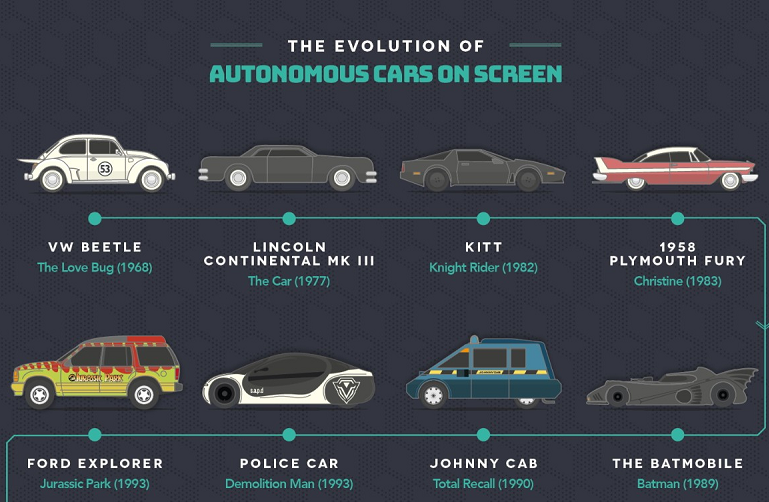Autonomous vehicles, once the stuff of science fiction, are quickly becoming a reality. From self-driving cars to delivery drones, the technology behind these vehicles is evolving at an unprecedented pace. What was once considered futuristic and far-fetched is now being implemented in real-world settings, with companies like Tesla, Waymo, and Amazon leading the charge.
One of the biggest milestones in the development of autonomous vehicles was the creation of the DARPA Grand Challenge in 2004. This competition sparked a race among engineers to develop the first fully autonomous vehicle capable of navigating a complex course. Although none of the vehicles completed the course in the inaugural challenge, it set the stage for further advancements and encouraged researchers to push the boundaries of what was possible.
Since then, autonomous vehicle technology has rapidly progressed, with major breakthroughs in machine learning, computer vision, and sensor technology. Companies have invested billions of dollars in research and development, leading to significant advancements in the safety, efficiency, and reliability of autonomous vehicles. Today, self-driving cars are being tested on public roads, delivery drones are being used for package deliveries, and autonomous shuttles are being deployed in cities around the world.
As the technology continues to evolve, there are still many challenges that need to be overcome. Safety remains a top concern, as the potential for accidents and malfunctions can have serious consequences. Additionally, there are legal and ethical questions surrounding the use of autonomous vehicles, including issues of liability and privacy. Nevertheless, the potential benefits of autonomous vehicles, such as reduced congestion, improved efficiency, and increased accessibility, make them an exciting prospect for the future of transportation.
Self-driving Vehicles: A Vision of Science Fiction Becoming Reality
The concept of self-driving vehicles has long been a staple of science fiction literature and movies, capturing the imagination of millions. From the flying cars in “The Jetsons” to the autonomous taxis in “Total Recall,” self-driving vehicles have been portrayed as a futuristic and fantastical mode of transportation. However, what was once considered pure fiction is now rapidly becoming a reality, thanks to advances in technology and the tireless efforts of engineers, researchers, and automakers.
Over the past decade, self-driving vehicles have evolved from experimental prototypes to commercially available products. Companies like Tesla, Waymo, and Uber have been at the forefront of this revolution, investing heavily in research and development to make self-driving cars a viable option for consumers. These vehicles are equipped with a multitude of sensors, cameras, and radars that enable them to navigate the roads, detect obstacles, and make real-time decisions.
One of the key advantages of self-driving vehicles is their potential to drastically reduce traffic accidents and fatalities. According to the World Health Organization, more than 1.35 million people die each year due to road traffic crashes. By eliminating human error, self-driving cars have the potential to significantly decrease this number. Moreover, self-driving vehicles have the potential to revolutionize the transportation industry by making it more efficient and accessible to all. Imagine a world where people can summon a self-driving taxi with just a tap on their smartphone, eliminating the need for private car ownership and reducing congestion on the roads.
- Self-driving vehicles have also sparked debates and concerns regarding safety, job displacement, and privacy. Critics argue that self-driving cars are not yet fully capable of handling complex driving scenarios and unexpected situations, which could lead to accidents. There are also concerns about the impact of self-driving vehicles on jobs, particularly those in the transportation industry. As self-driving technology advances, it is crucial to address these concerns and ensure that appropriate regulations and safety measures are in place.
- Despite the challenges and concerns, self-driving vehicles have the potential to revolutionize transportation and improve the quality of life for millions of people. As the technology continues to evolve and become more sophisticated, we can expect to see self-driving vehicles become a common sight on our roads in the near future. The transition to fully autonomous vehicles may not be seamless, but the benefits they offer in terms of safety, efficiency, and accessibility make them a promising solution for the future of transportation.
Advancements in Technology: Transforming the Automotive Landscape
In recent years, advancements in technology have been driving a transformative change in the automotive industry. This, coupled with the development of autonomous vehicles, is reshaping the way we think about transportation. From electric powertrains to artificial intelligence, the automotive landscape is changing at an unprecedented pace.
One of the most significant advancements in technology is the development of electric vehicles (EVs). With concerns about climate change and the need for sustainable transportation solutions, EVs offer a clean and efficient alternative to traditional combustion engines. The continued innovation in battery technology has led to improvements in range and charging times, making EVs a viable option for everyday use.
The integration of artificial intelligence (AI) and machine learning in autonomous vehicles has also transformed the automotive industry. AI algorithms enable autonomous vehicles to perceive and interpret the surrounding environment, making real-time decisions and adjustments to navigate safely and efficiently. This technology has the potential to greatly reduce accidents and improve overall road safety.
Another technological advancement that is revolutionizing the automotive landscape is connectivity. With the advent of the Internet of Things (IoT), vehicles can now be connected to a network, allowing for new functionalities and services. From advanced navigation systems to vehicle-to-vehicle communication, the connected car is becoming a reality, offering a seamless and enhanced driving experience.
In conclusion, advancements in technology are playing a pivotal role in transforming the automotive landscape. From electric powertrains to AI-enabled autonomous vehicles, these innovations are reshaping the way we think about transportation. With the continued evolution of technology, we can expect to see further advancements in the automotive industry, paving the way for a future of safer, cleaner, and more connected vehicles.

